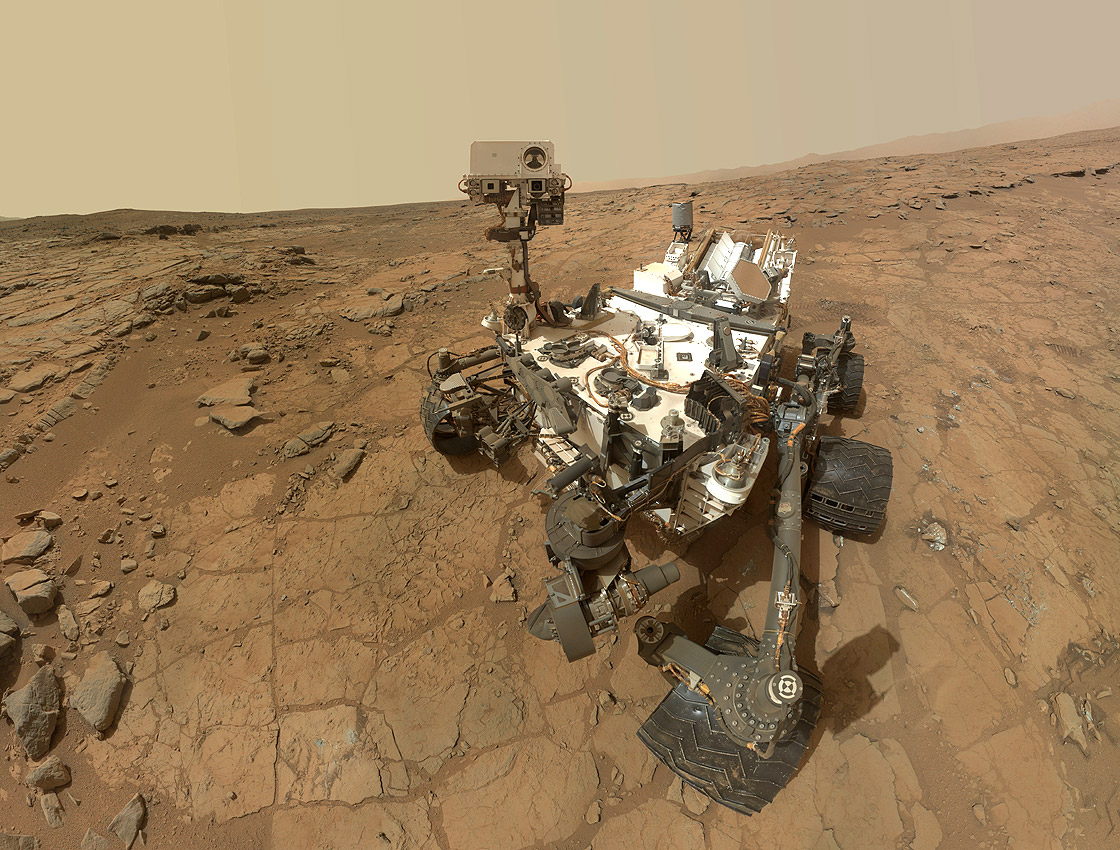New data collected by NASA’s Curiosity rover has found traces of chemicals that suggest Mars was once more Earth-like than scientists once thought.

Curiosity’s ChemCam — an instrument that zaps into the surface of Mars to analyze its chemical make-up — detected traces of manganese oxides in Martian rocks.
READ MORE: Opportunity rover finds more evidence of past water on Mars
“The only ways on Earth that we know how to make these manganese materials involve atmospheric oxygen or microbes,” said Nina Lanza, a planetary scientist at Los Alamos National Laboratory and lead author on the study published in the American Geophysical Union‘s journal. “Now we’re seeing manganese-oxides on Mars and wondering how the heck these could have formed.”
It’s unlikely that microbes are responsible for the manganese oxides, the study said. However, what seems likely is that the Martian atmosphere once held more oxygen than it does now.
Materials rich in manganese oxides can’t form without plenty of liquid water and conditions of oxidation, Lanza explained in the release. At one point on Earth there was plenty of water but no manganese oxides — that is, until oxygen levels in our atmosphere rose as a result of photosynthesizing microbes. Using what they already know, the researchers suggest that similar circumstances occurred on Mars as well, while it had an abundance of water.

Get breaking National news
About 4.2 billion years ago, Mars — believed to have had an abundance of water — began to lose its magnetic field. The loss of the field, however, caused the water to break into hydrogen and oxygen. Hydrogen was too light for the low gravity of Mars (which is around 38 per cent that of Earth) and was lost. However, the heavier oxygen remained. Some of the iron oxides, which gives Mars its renowned reddish hue, went into the rocks.
READ MORE: Is going to Mars really in our future?
Iron oxides don’t need a lot of oxygen to exist. But for manganese oxide to exist (deeper down in the rocks), it means that at some point the environment had to have had a strongly oxidizing atmosphere — the presence of oxygen.
“It’s hard to confirm whether this scenario for Martian atmospheric oxygen actually occurred,” Lanza added. “But it’s important to note that this idea represents a departure in our understanding for how planetary atmospheres might become oxygenated.”



Comments